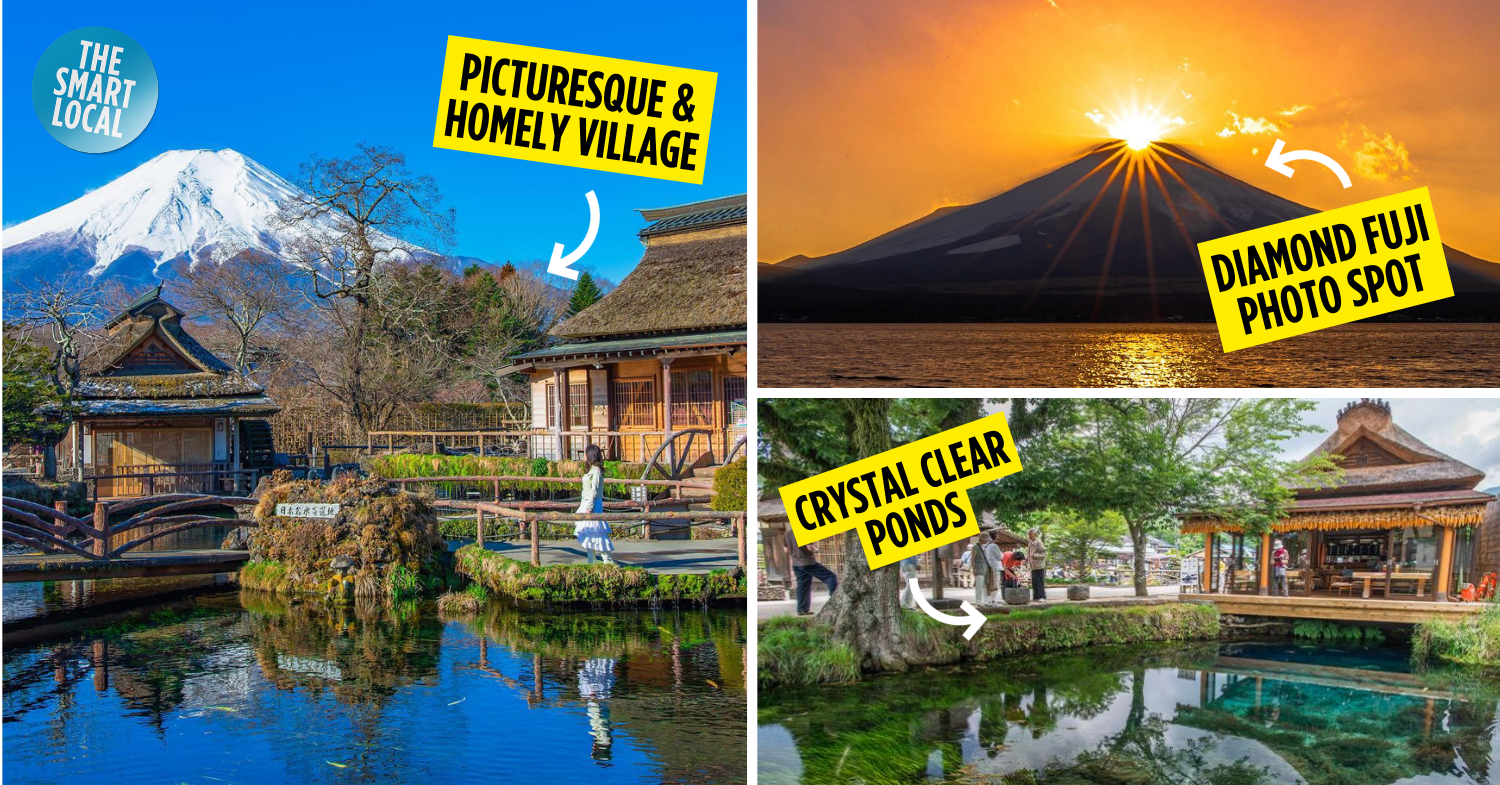Oshino Hakkai
Oshino Hakkai consists of 8 crystal clear ponds located in Oshino-mura, a quaint village-town sandwiched between Lake Kawaguchiko and Lake Yamanakako. This scenic spot brings to mind the idyllic village life of a bygone era with wooden houses, water wheels, and flourishing aquatic life.
8 sacred ponds from Mount Fuji’s 6th lake
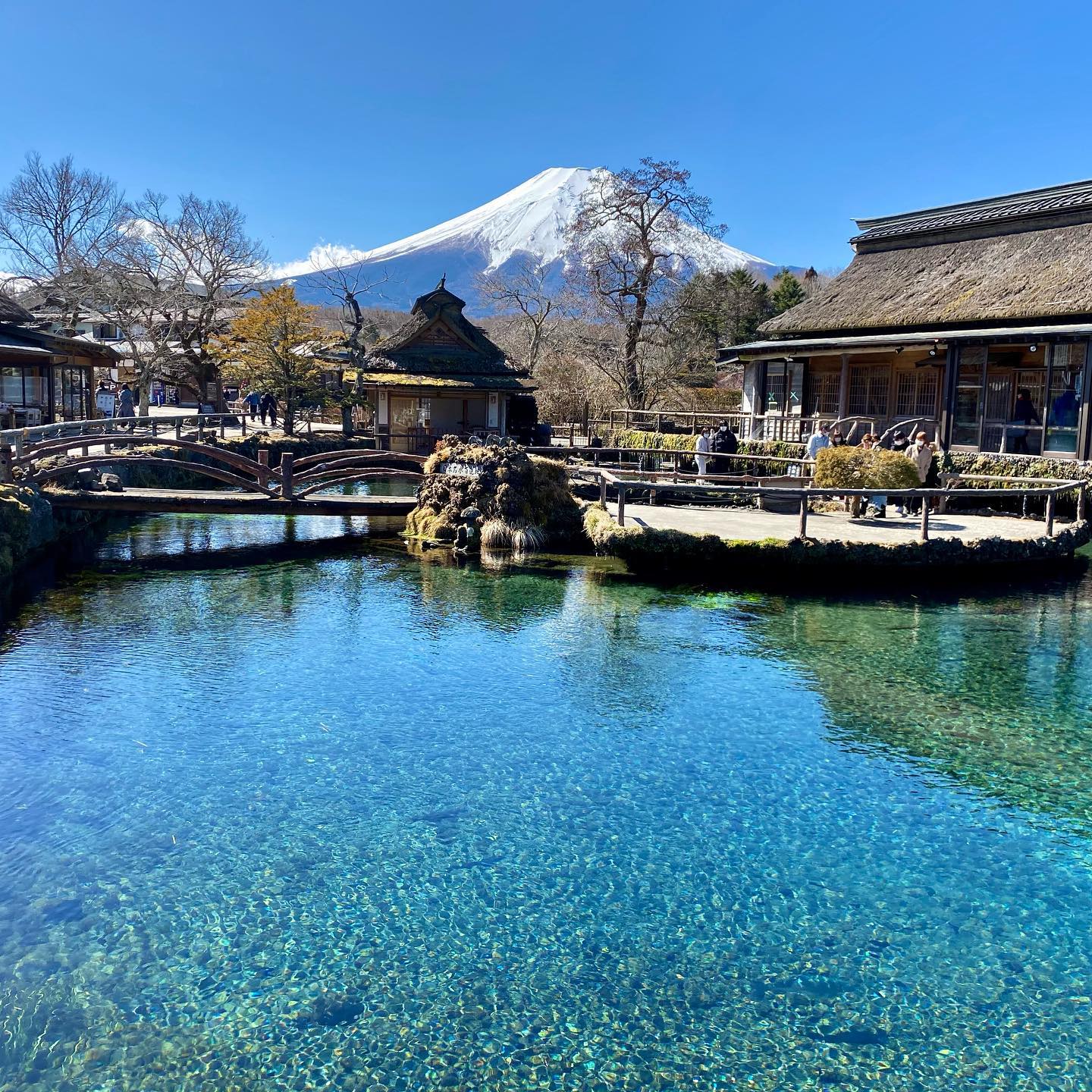
Image credit: @hideyasu.t
Oshino Hakkai is nicknamed the “sixth lake” of the Fuji Five Lakes region. That’s because the ponds of Oshino Hakkai were formed after multiple eruptions of Mount Fuji evaporated the water from the original 6th lake, forming the 8 freshwater bodies we know today.
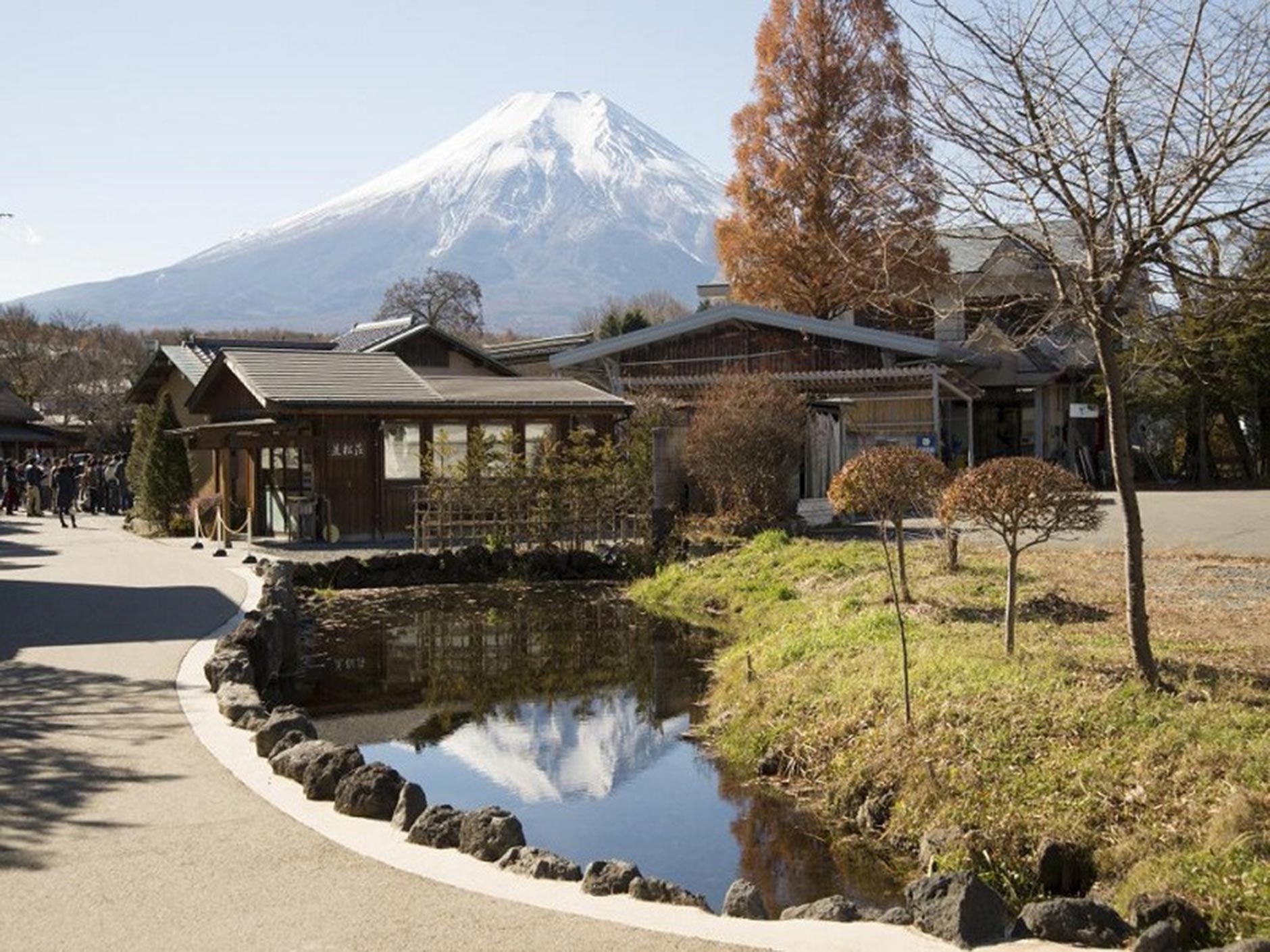
Image credit: Yamanashi Tourism Organization
The ponds – Deguchi, Okama, Sokonashi, Choushi, Waku, Nigori, Kagami, and Shoubu – were named based on their unique characteristics. For instance, the Kagami Pond gets its name from how it reflects Mount Fuji perfectly like a mirror, which is kagami (鏡) in Japanese.
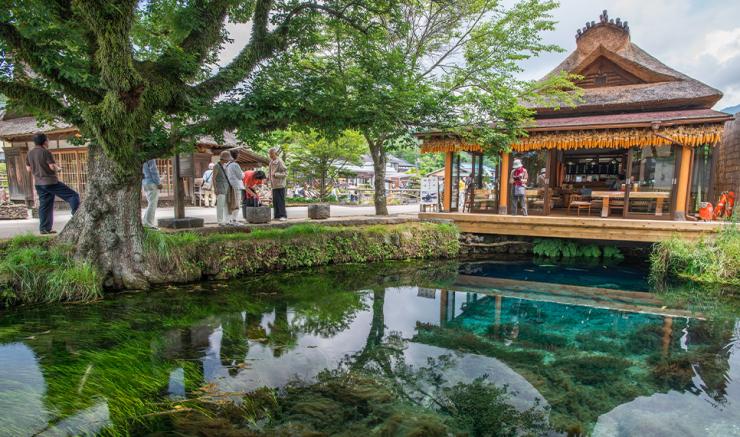
Image credit: Yamanashi Tourism Organization
Of the 8 ponds, the water in the Waku Pond is especially clean. Feel free to take a sip of the fresh spring water blessed with rich minerals, and even bottle some as a souvenir.
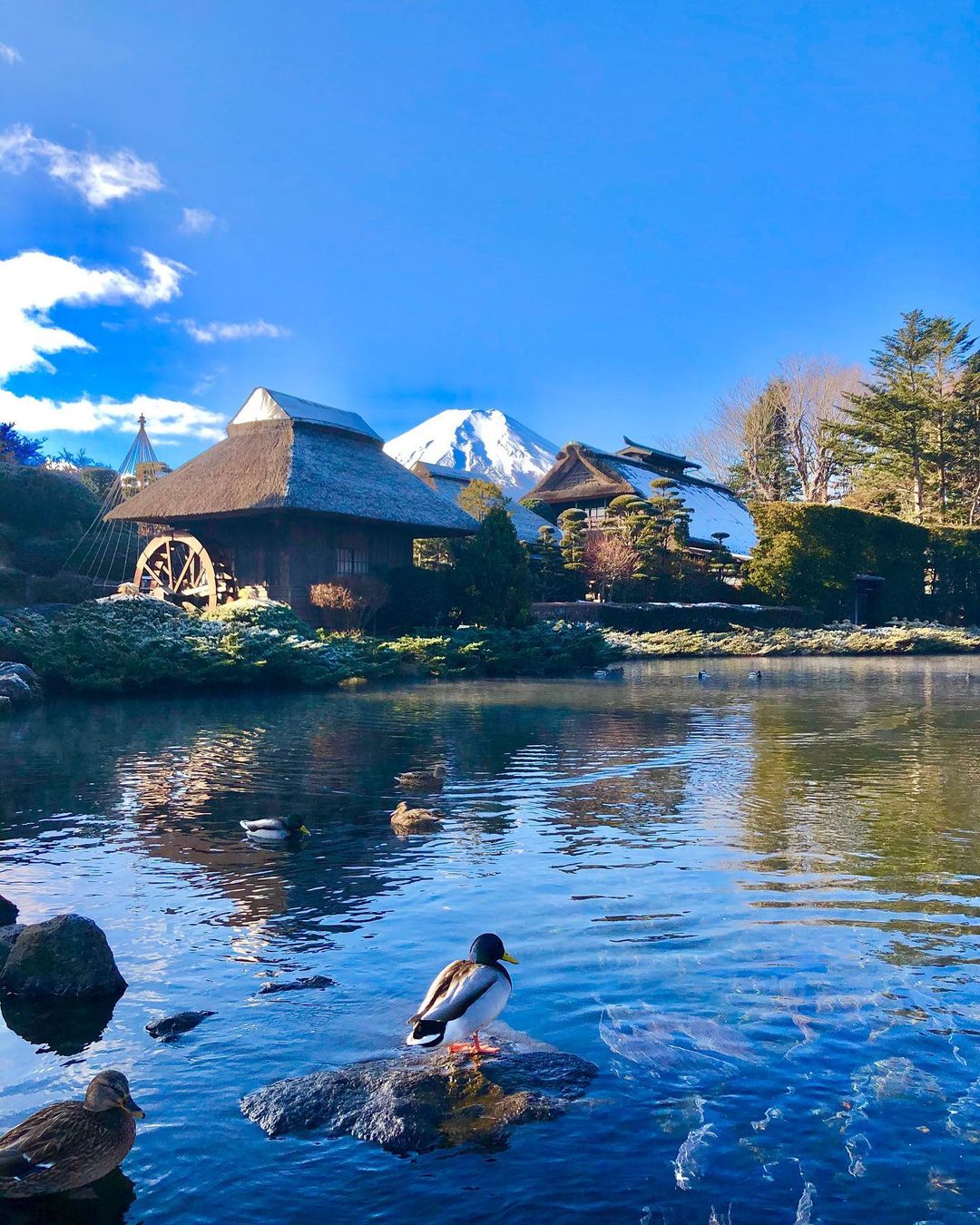
Image credit: @matsuda.yamamoto
While they’re referred to as “ponds”, the 8 bodies of water that make up Oshino Hakkai are rather deep and hosts a kingdom of plant life, fishes, and ducks. Perhaps this is why the kanji for “hakkai” (八海) literally translates to “8 oceans”.
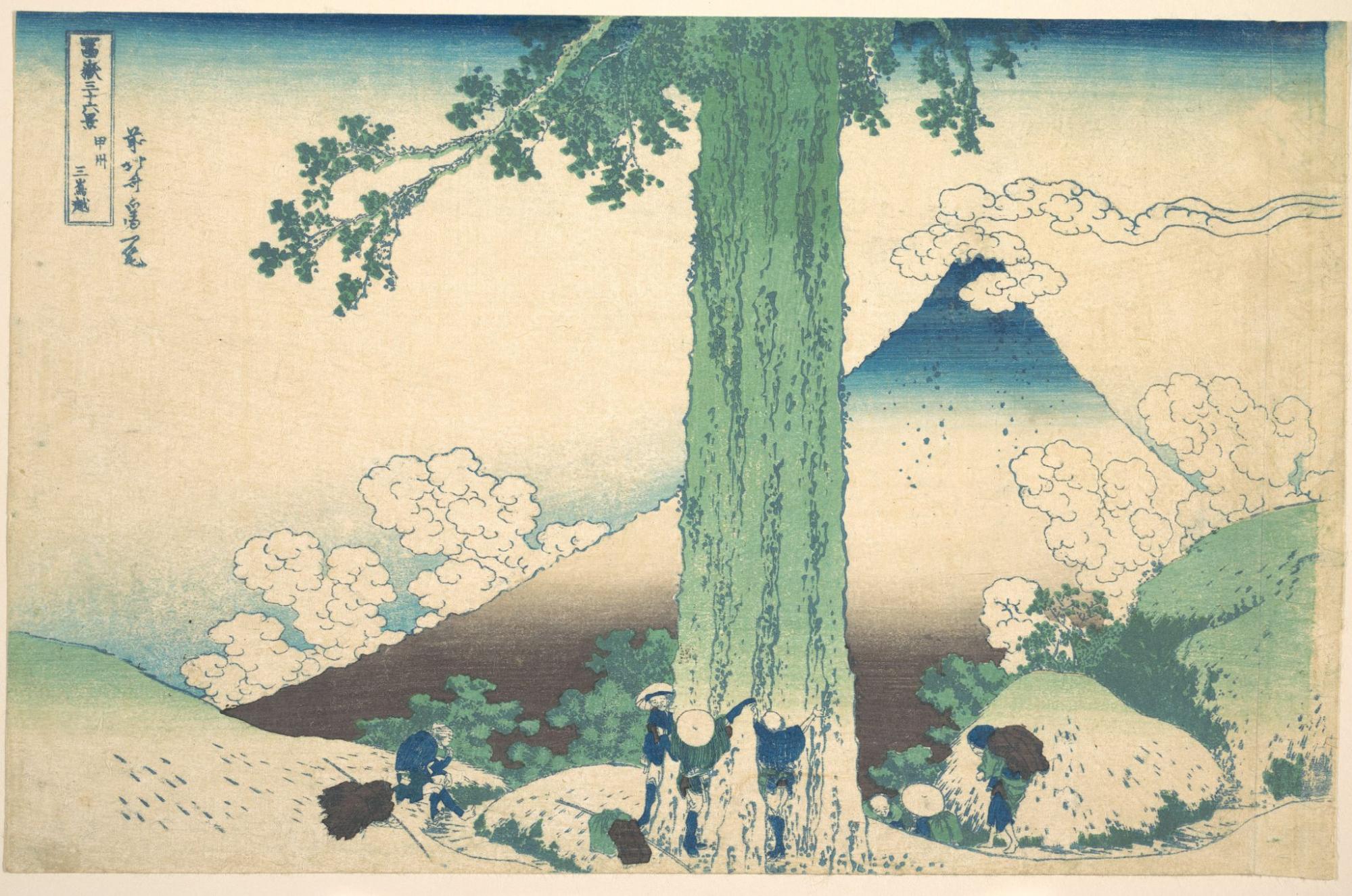
Image credit: Katsushika Hokusai
The ponds were originally known as the Fujisan Nemoto Hakko Sacred Grounds, or Moto-Hakko. Because 8 is a significant number in Buddhism, circling around the 8 ponds became a symbolic ritual. As part of worship, pilgrims would also purify themselves at the ponds before heading to Mount Fuji.
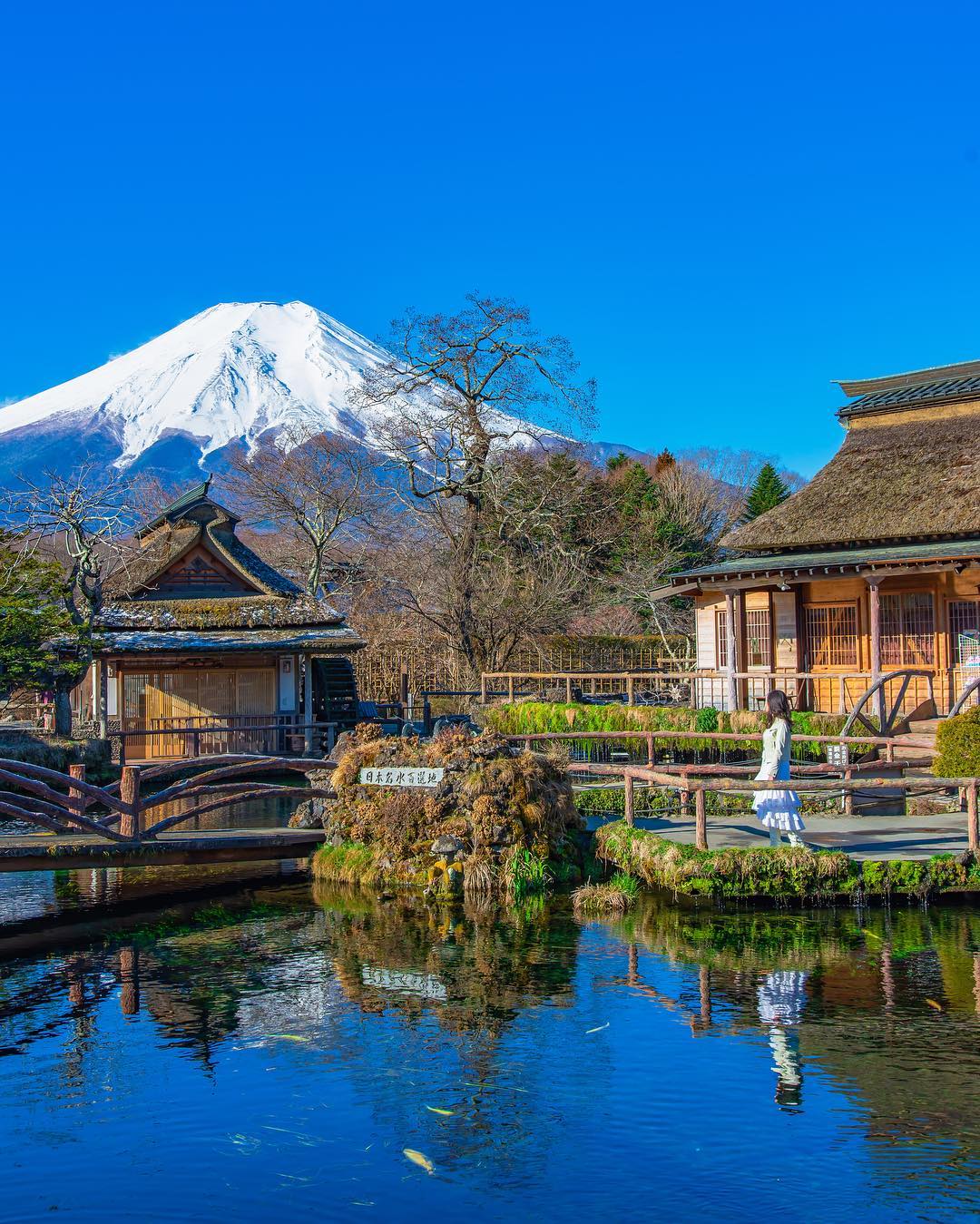
Image credit: @kyoko1903
The practice has since rapidly declined, but these waters remain incredibly pristine. Their secret? Mount Fuji’s underground reserves. The ponds have accumulated 80 years’ worth of snowmelt that are filtered through porous layers of volcanic rocks.
Majestic year-round views of Mount Fuji
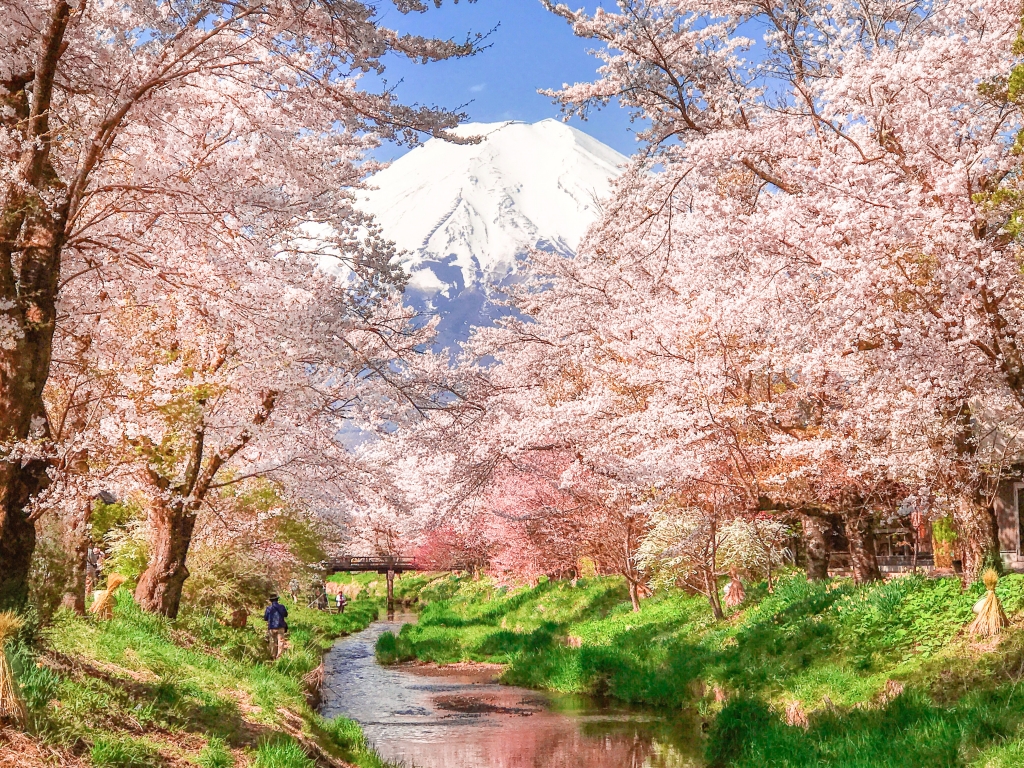
Image credit: @1min.traveller
Oshino Hakkai offers a panoramic view of Mount Fuji. The waters reflect the sky and the iconic mountain, so it almost feels as if you’re peering into another world when gazing at the ponds. With this spectacular background, it’s no wonder that Oshino Hakkai is a popular destination for cherry blossom viewing from early to mid-April.
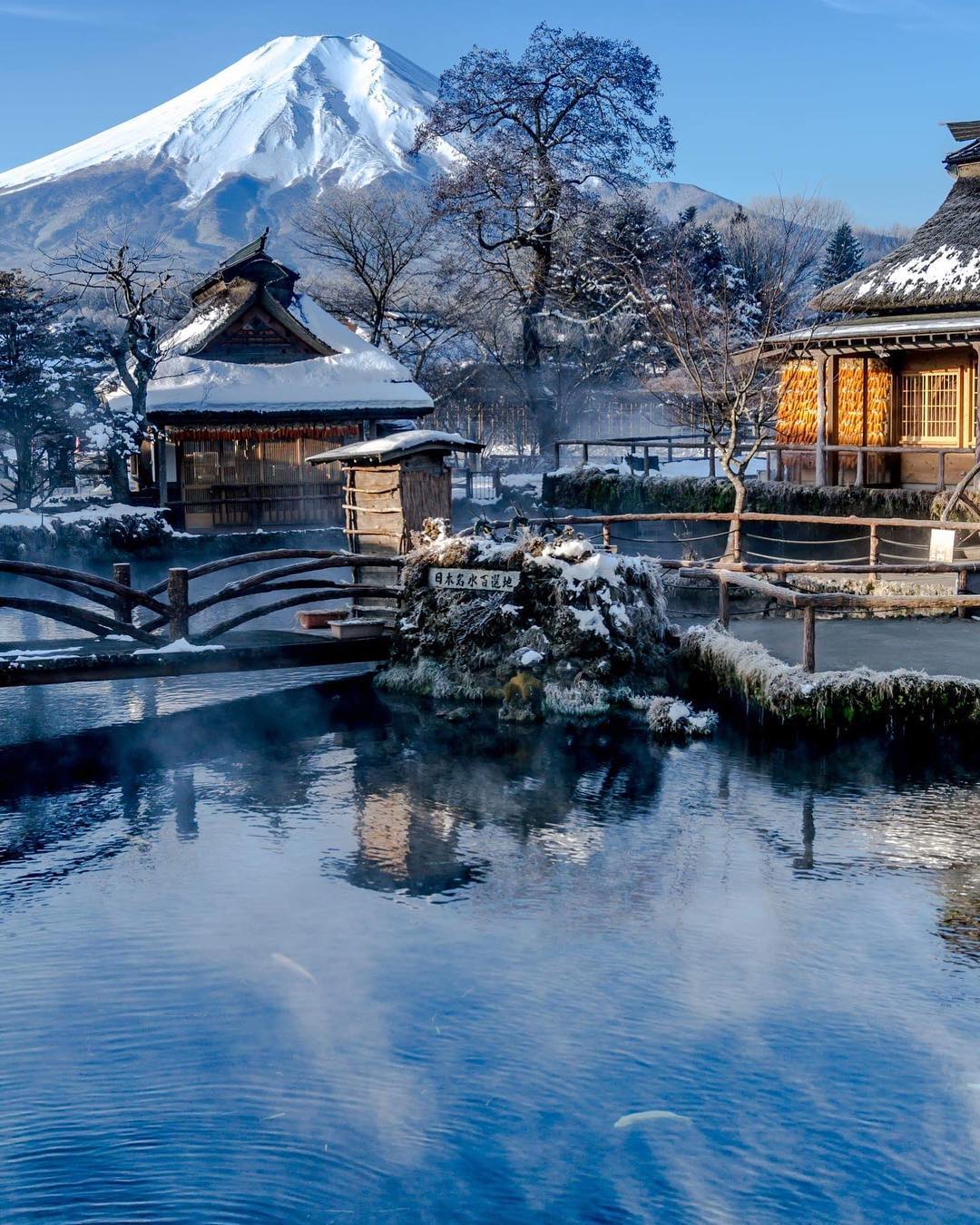
Image credit: @zekkei_japan
But if you visit in winter, you’ll catch a rare vista of Diamond Fuji. This striking phenomenon happens when the sun aligns perfectly with the peak of Mount Fuji, and the caldera appears to embrace the sun like a diamond sitting on a ring.
This event can only be observed in certain places due to the specific angles required between the Earth, the Sun, and Mount Fuji in-between.
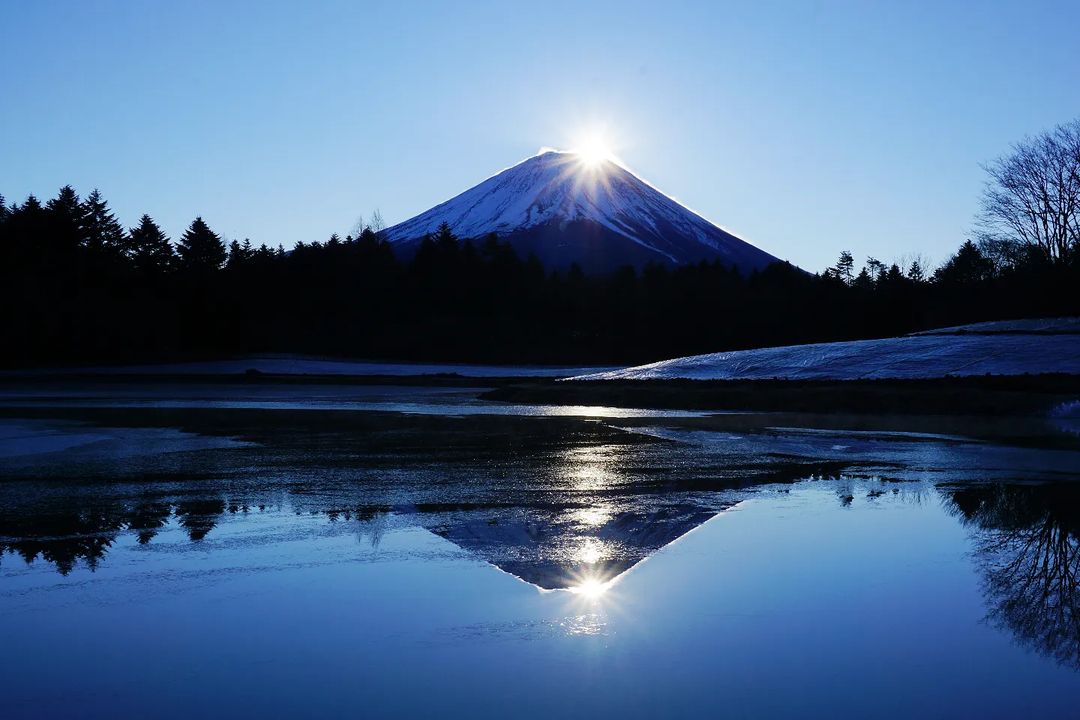
Image credit: @gabyalmira
This view is especially most stunning when viewed from Oshino Hakkai. As it occurs during sunset and sunrise, the surrounding waters take on a soft golden glow, so you’ll really bathe in the glory of the experience.
Picturesque village with a traditional museum
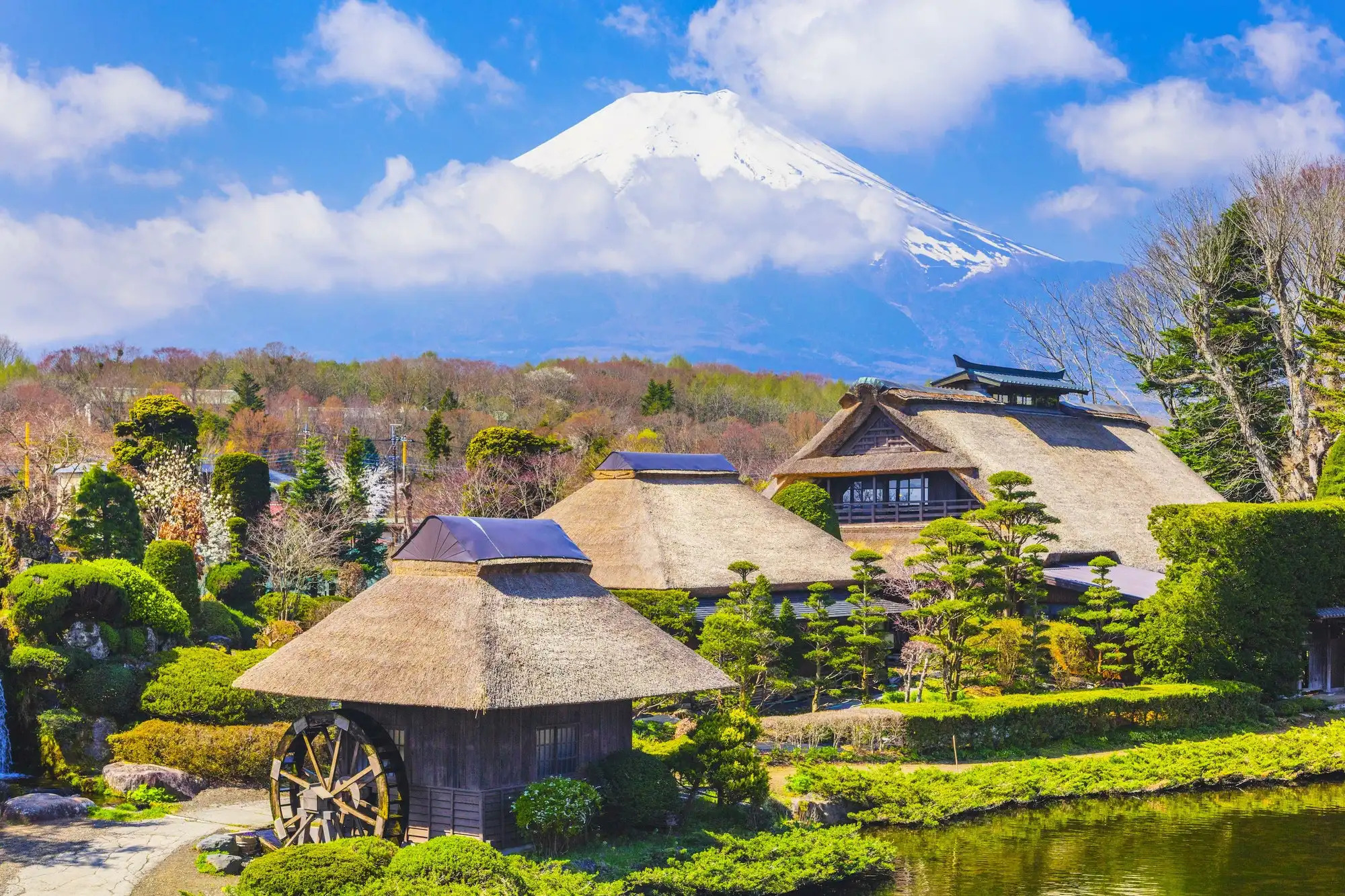
Image credit: ULTIMEDIA Inc.
Oshino Hakkai is not just beautiful, but it also evokes a sense of simple homeliness with its wooden houses, water wheels, and closeness to nature.
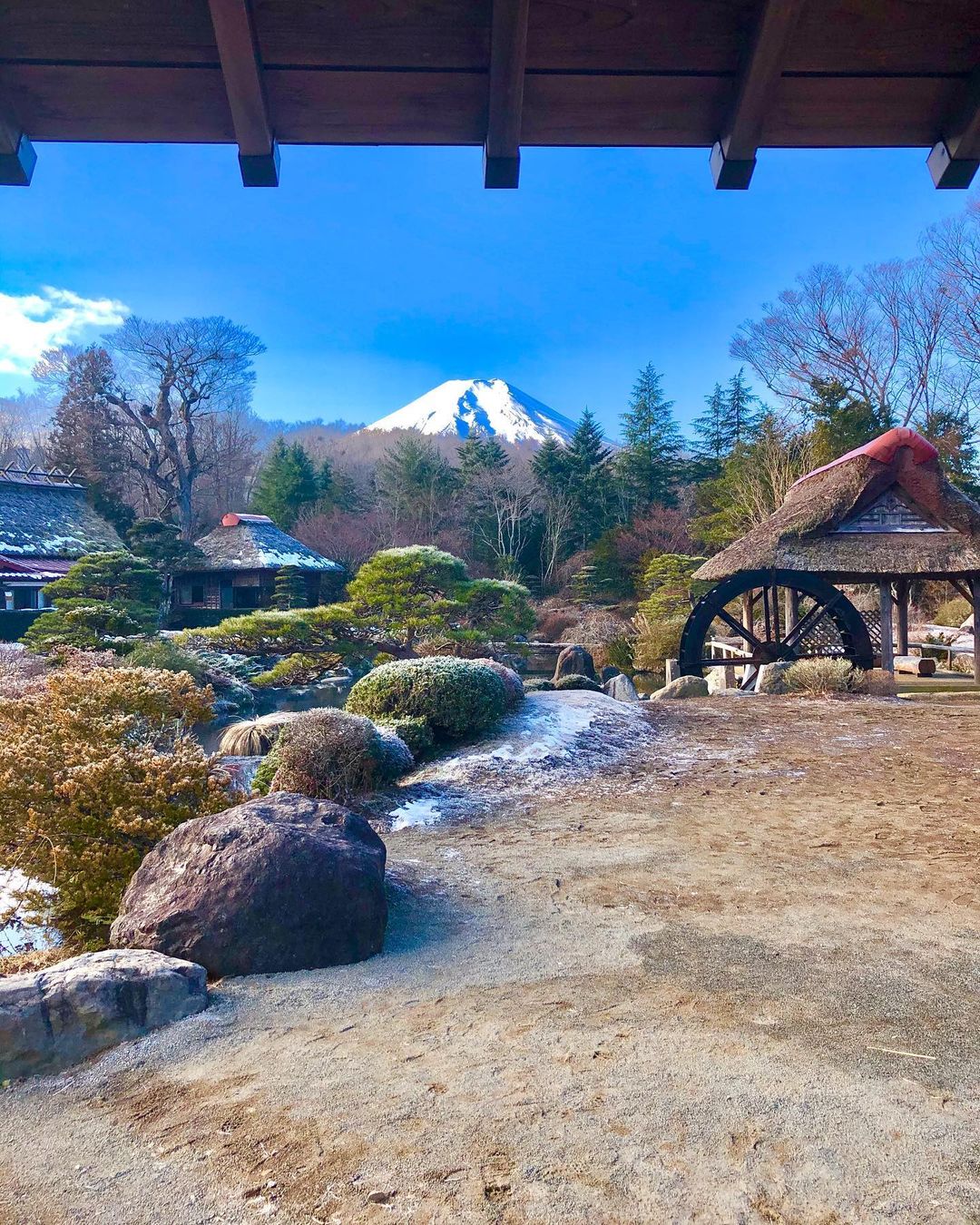
Image credit: @matsuda.yamamoto
You’ll find lots of traditional restaurants and 2-storey guesthouses that fit the nostalgic vibe – you can even look them up beforehand on Oshino Hakkai’s official website.
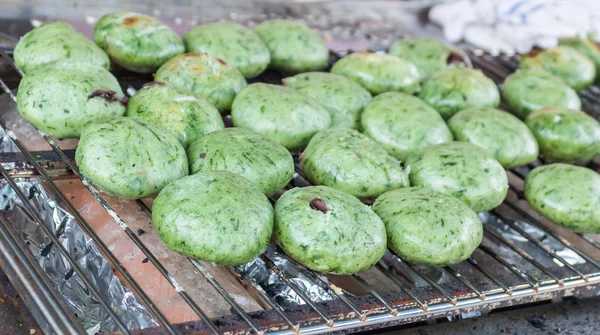
Image credit: amnachphoto
While walking along the streets, the delicious smell of local snacks fresh off the grill will stop you on your tracks. These snacks include roasted sweet potato, toasted shrimp crackers, and yomogi mochi.
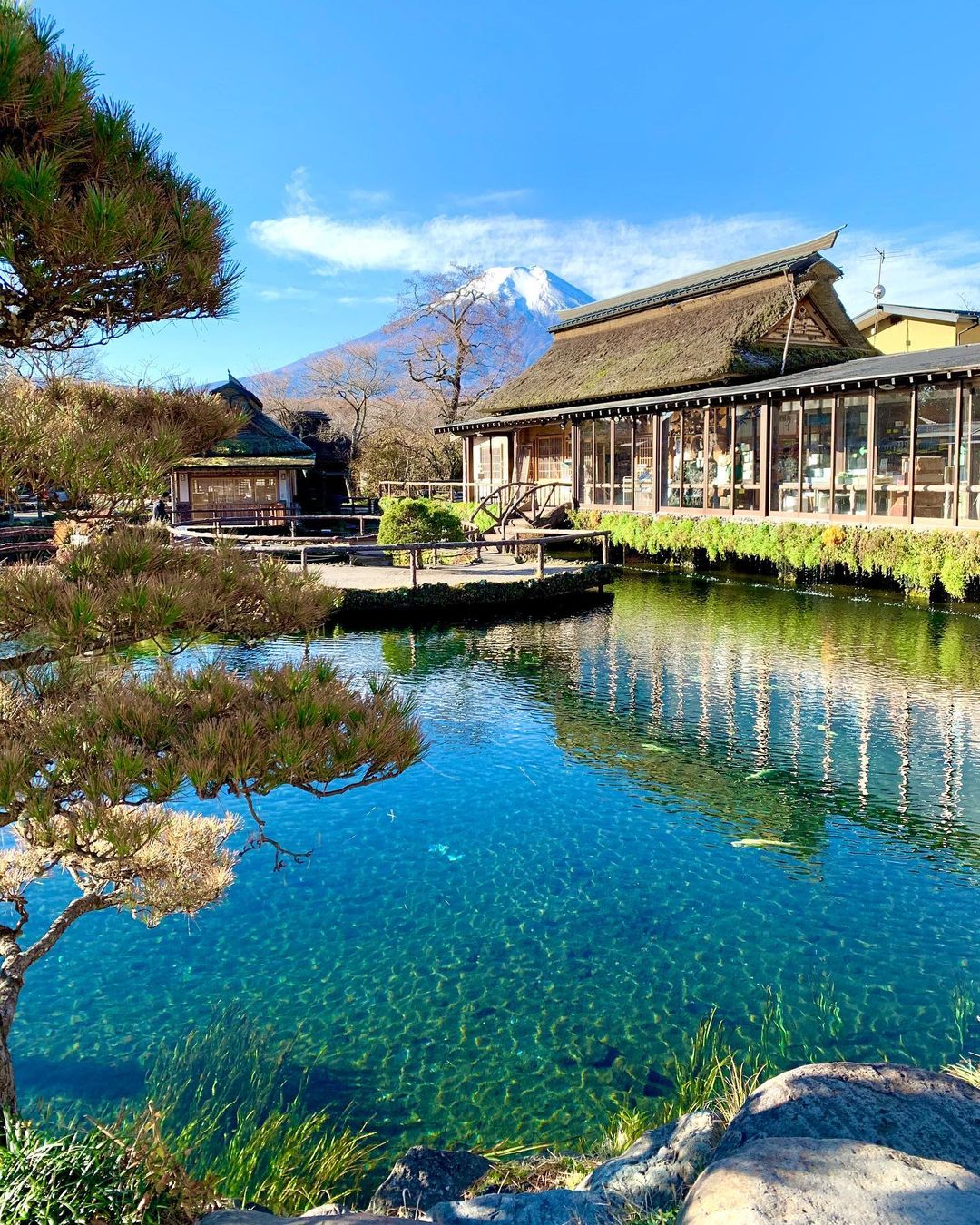
Image credit: @crab_travels
If you’d like to learn more about how life was really like in the past, the town’s quaint open-air museum, Hannoki Bayashi Shiryokan, will give you a glimpse of that. The museum stands beside the Kagami Pond in a traditional thatched roof farmhouse.
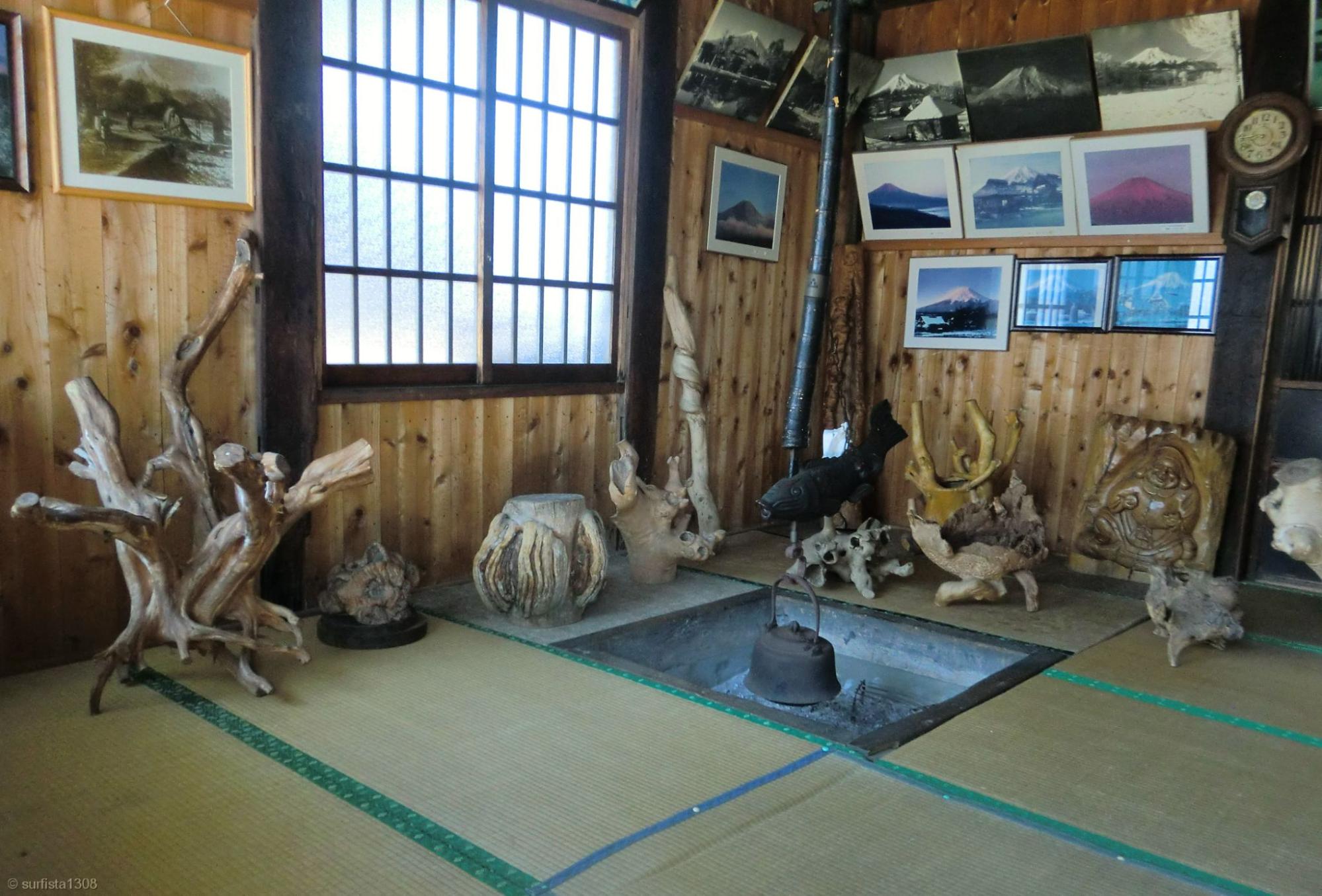
Image credit: Igor Shiraishi Kawaguchi
It displays farming tools, household items, samurai armors, and weapons.
Hannoki Bayashi Shiryokan
Admission: ¥300 (~USD2.08) for adults and children aged 12 & above, ¥150 (~USD1.04) for children aged 6-11, ¥100 (~USD0.69) for toddlers from 1-5 years old
Address: 265 Shibokusa, Oshino Village, Minamitsuru District, Yamanashi Prefecture
Opening hours: 9am-5pm, Daily
Contact: 0555-84-2587 | Hannoki Bayashi Shiryokan website
How to get to Oshino Hakkai
Oshino Hakkai is open 24/7, so you can behold the beauty of Mount Fuji at all times of the day. With all these features in store, it’s no wonder that the village has been a UNESCO World Cultural Heritage site since 2013.
And being a UNESCO site sure has its perks. Lots of buses and tour groups carry visitors to Oshino Hakkai daily, so you don’t have to worry about how to get there.
Getting there: From Kawaguchiko train station along Fujikyuko line, take a 30-minute bus ride via the Loop Shuttle (Left) Bus to Oshino Hakkai Iriguchi stop.
Admission: Free
Address: Shibokusa, Oshino Village, Minamitsuru District, 401-0511 Yamanashi Prefecture
Opening hours: 24 hours, Daily
Contact: 0555-84-4221 | Oshino Hakkai website
Also check out:
- Mount Fuji climbing guide
- Shopping district with Mount Fuji in the background
- 10 hotels in Japan with Mount Fuji views
- Campground In The Healing Presence Of Mt Fuji
- Roller coaster tower with Mt Fuji views
Cover image adapted from: @kyoko1903, @japan.spot , Yamanashi Tourism Organization
